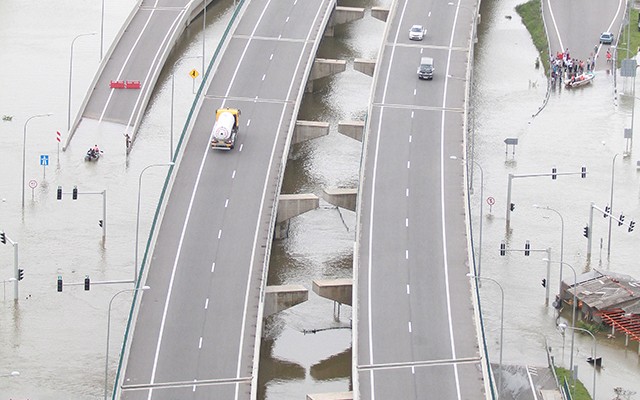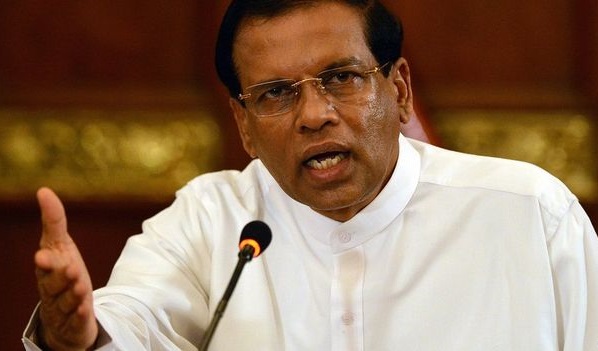
Delicate balance between Development and environment
According to government reports, recent floods and landslides in Sri Lanka have caused widespread disruption across country. Over 400,000 people have been displaced by floods, many casualties have been reported, and dozens are feared missing. Government puts this down to climate change. Such disasters were on the discussion table since 2010, and it was to be expected.
Center for environmental and Nature studies (CENS), Sri Lanka repeatedly reached out to the Environment Ministry and relevant authorities to put a stop to the destruction of environmentally-sensitive areas while implementing the National Physical Plan. But such entreaties were blatantly disregarded. This capitalist system is bent on increasing profit for the business community and decreases quality of life. This article elaborates on the reasons for flooding, landslides and other disasters.
The National Physical Plan to be implemented from 2011 to 2030 creates serious negative impacts on the ecosystems, so far untouched by development interventions. As a result of Colombo-Matara Highway, Sinharaja forest would be fragmented twice and 39 forests, including Sinharaja will be destroyed due to the proposed-development activities. Bibile, Nilgala area would have tremendous negative repercussions as a result of the proposed-hotel complexes.
Forests act as a barrier to soil erosions. Roots systems of these trees hold the soil layers together, protecting the earth from landslides. Destruction of forest cover increases soil erosion and risk of landslides. The percentage value of available forest area in 2012 is around 16.5 and by 2030, it is estimated that this will be further reduced to between 13 to 10 per cent with the decrease of forests due to the implementation of National Physical Plan, if the current government decides to go through with it. Ground water levels in the forests will deplete, and rivers will suffer from acute water shortage and go dry. It has been identified that 103 rivers will turn dry as in the case of Maguru Oya which is almost completely dried out.
There are riffles and pools midstream of every river. According to our research observations, riffles and pools have been covered by concrete buildings and roads. Micro-hydro projects and mega-development projects have blocked water-feeding channels, in Kelani River, for example. Riffles and pools are located in Kaluaggala, Avisswella, Waga and Hanwella areas. Colombo-Avissawella Road and many building were built, blocking and destroying riffles and pools. This is the cause for the many floods and landslides in many areas.
Flow of water in the riverbed should be natural. In the Sri Lankan scenario, downstream riverbeds are filled with sediments, hindering the natural flow of water. Sediment is transport to riverbeds from flood plains; erosion and construction around rivers increase flood and landslides. For example, due to construction of Pico hydro power on top of Laxapana waterfall and Kitulgala, Kelani River receives tons of sediments. This has resulted in increased incidence of flooding in Hanwella and Colombo areas. Most rivers receive lots of sediments from mega highway construction activities and other mega development sites.
In the process of building large cities, highways, airports, tourist hotels, a large number of minor tanks will disappear and tank cascades will be blocked disrupting natural water flow. As a result, droughts and floods will become a recurrent feature in Anuradapura, Polonnaruwa, Trincomalee and Kurunegala.
Many floodplains are being ravaged by mega development projects. For example, a highway was built destroying Muturajawela wetland and many other wetlands in the country. Before the highway was built, not a single incident of flooding was reported in Kaduwela and Ja-Ela areas. Encroachment of floodplain has caused massive disasters in the past. Many floodplains have been converted to build sites of homes, businesses and other urban development activities.
This is most evident in Kelani River, during rainy season when water level of Kelani River goes up flooding human settlements built in the floodplain.
The Mahaweli Development Plan which kicked off with the anticipation of tremendous development within a short period resulted in ecological disasters such as landslides, increased incidence of floods, human-elephant conflict, land fragmentation and loss of biodiversity. The country is still paying debts to international funding agencies that funded Mahaweli Accelerated Development Programme. This trend continues with the development activities proposed under the National Physical Plan.
In another example, many people die in the Meeriaybedda landslide in 2014. The cause of the landslide is believed to be the drilling and blasting method used for rock breaking and tunnel drilling of the Uma Oya project. The vibration caused by the process subjects the area to the inevitable risk of landslides in the future.
We have enough environmental laws to protect nature and prevent disasters, but all laws are under political and monetary influence. Funds for the destructive National Physical Plan are provided by funding agencies such as the World Bank and Asian Development Bank.
John Parkinson in his Book Confession of an Economic Hit Man recounts how countries like America believed in a rapid, tremendous development through and when they found that their developmental interventions failed one by one, they attempted to maintain their economy by exploiting other countries with high interest rates and conspiracies to topple governments acting against their policies and so-called development programmes.
In Parkinson’s view, the capitalist countries build hope in the minds of leaders in poor countries through their imaginary models for rapid economic development. One such example is Norochcholai Coal Power Project in Sri Lanka. The project has failed to provide any of the benefits promised at inception.
Parkinson further says that foreign companies provide loans through which developing countries can be caught in an everlasting debt trap. Capitalist countries make huge profits through interest charged for loans and exploitation of natural resources of the countries concerned. They are also concerned with appointing people who obey their policies and commands as the leaders of these countries.
Similar fate would befall Sri Lanka, if the current government is to follow through with the National Development Plan. Mega development does not sustain the world. Luxury apartments, highways, airports, megacities, supermarkets cannot be considered socio-economic indicators of a country. Though capitalist regimes unconditionally stand by the National Physical Plan, World Bank and Asian Development Bank agendas, they do not bother about the priorities of the vulnerable majority.
Source 30-05-2016 Nation( Sri Lanka http://nation.lk/online/2016/05/28/delicate-balance-between-development-and-environment.html

President Sirsena pledges to take strict action against environmental destruction
President Maithripala Sirisena while addressing an event held in Polonnaruwa today, stated that if any environmental harm is reported in a certain area, strict action will be taken against the responsible government official in the area.
The event was held at the Sevamuktha Kandavura Maha Vidyalaya in Polonnaruwa this morning to declare the National Environment Week, parallel to World Environment Day which falls on the 5th of June.
President Sirisena planted a Na sapling at the school premises to mark the Tree Planting Programe implemented in line with the National Environment Week. Gold medals were awarded for the Environmental Pioneer Brigade in the Dimbulagala area under the auspices of the President.
The President in his address pointed out that the Kelani River basin in the Colombo District lies completely destroyed today and around 150 meters on either side of the banks of the Kelani River are full of constructions and all reserves which belong to this river are destroyed.
He further added that buildings have been constructed over the canals, drains and waterways in Colombo and especially Kolonnawa and it is the politicians, state officials and everyone of their respective eras who should be held responsible for this and if any unauthorized buildings or environmental pollution happens in a way which damages the canal and river preservation in any area, strict action will be taken against the responsible government officials in these areas.
(Source : 30-05-2016: News First (Sri Lanka http://newsfirst.lk/english/2016/05/president-sirsena-pledges-take-strict-action-environmental-destruction/137861)





